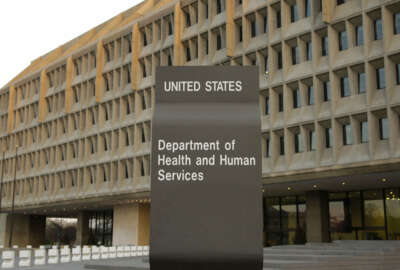With an increase in federal payouts comes an increase in improper payments
Agencies made speed a priority when issuing the first rounds of COVID-19 recovering spending in 2020 — a decision that came with a few tradeoffs.
Agencies made speed a priority when issuing the first rounds of COVID-19 recovering spending in 2020, a decision that came with a few tradeoffs.
The governmentwide improper payment rate increased between fiscal years 2020 and 2021, driven largely by programs that administered trillions of dollars in pandemic spending.
The Office of Management and Budget, in a Dec. 30 blog post, found improper payments grew most under the Federal-State Unemployment Insurance program, which saw its improper payment rate reach nearly 19% — eight points higher than pre-pandemic rates.
“We know that problems accumulated from early in the pandemic are still being discovered and will take a long time to clean up,” OMB wrote in the blog post.
Improper payments include overpayments, underpayments, as well as payments in the right amount to the right person, but not strictly adhering to legal or regulatory requirements.
If an agency can’t confirm whether a particular payment is made improperly at the time of review, it counts the entire payment as an improper payment, even if the agency later finds it only issued part of the payment improperly.
Agency inspectors general and other watchdogs have a much harder time recovering improper payments once they’ve been issued, but former OMB Controller Dave Mader, now chief strategy officer for the civilian sector at Deloitte, said the lessons learned vetting pandemic spending will go a long way toward managing payment integrity for spending under the bipartisan infrastructure.
“We have a shared interest in making these fixes permanent. Now’s the time — and the administration is doing this — to come forward to say, here’s a series of actions that we need to make, whether it’s identify authentication or a better exchange of data between federal agencies,” Mader said. “We’ve seen what has to be fixed, let’s just go fix it.”
Congress, in some cases, gave agencies greater access to federal data to flag improper payments.
Lawmakers, for example, gave the IRS and the rest of the Treasury Department full access to the Social Security Administration’s Death Master File as part of an omnibus and COVID-19 relief package.
The Government Accountability Office recommended Congress give Treasury full access to the Death Master File after the IRS sent nearly 1 million stimulus payments to the dead.
But agencies still face limits on what kinds of federal data they can access, if they didn’t collect it themselves.
Linda Miller, the former deputy executive director of the Pandemic Response Accountability Committee, now a principal at Grant Thornton, said that inability for agencies to access data may stem from legal restrictions or limitations in technology.
“A lot of information is collected by the IRS than can be very valuable to agencies where they’re trying to determine eligibility and approval, but the agency can’t access IRS data,” Miller said.
The PRAC, in an August 2021 report on lessons learned in oversight of pandemic relief funds, urged programs to validate self-certified information from applicants.
The committee specifically pointed the Small Business Administration’s Economic Injury Disaster Loan (EIDL) program and the Labor Department’s Unemployment Insurance programs that saw a significant increase in improper payments during the pandemic, and allowed applicants to self-certify their eligibility.
While the PRAC highlighted this problem, Miller said self-certification remains the standard for many agency programs.
“It’s better than it was in the few months during the beginning of the pandemic, sure, but it’s by no means not a problem anymore. It’s the biggest problem in the improper payment space,” Miller said.
To reduce improper payments, agencies may need to spend money to save money.
Miller said more agencies need dedicated funding to support program integrity, and pointed to the Centers for Medicare and Medicaid Services’ Center for Program Integrity (CPI) as one example that has shown value.
CMS launched the center in April 2010 to consolidate its efforts to detect fraud, waste and abuse across its Medicare, Medicaid and the Children’s Health Insurance Program (CHIP).
“They’ve got a very large analytics capability. They’re building all kinds of models and they’re one of the only agencies that have seen a reduction in their improper payment rates,” Miller said. “Other agencies aren’t seeing those reductions, because they don’t have those analytics capabilities, because they haven’t gotten dedicated funding.”
CPI helped the Justice Department in a case last year that led to criminal charges filed against a telemedicine company executives, physician, marketers and medical business owners for more than $143 million in alleged fraudulent billing to CMS during the pandemic.
CPI also took adverse administrative action against 50 medical providers for their involvement in alleged health care fraud tied to the COVID-19 or CMS programs aimed at ensuring easier access to health care during the pandemic.
Agencies, however, may have a hard time getting dedicated funding to support program integrity, especially now that agencies have issued much of the pandemic spending authorized by Congress.
“People don’t call their congressman to say, ‘I think someone’s stealing taxpayer money.’ They call their congressman to say, ‘I didn’t get a benefit,’ and so congressmen are responding to what they’re hearing from their constituents, and the agencies are responding to what they’re hearing from their lawmakers and the heads of their agencies,” Miller said.
Copyright © 2025 Federal News Network. All rights reserved. This website is not intended for users located within the European Economic Area.
Jory Heckman is a reporter at Federal News Network covering U.S. Postal Service, IRS, big data and technology issues.
Follow @jheckmanWFED






